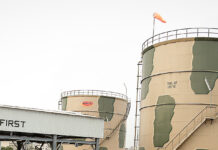Pakistan’s inflation rate has reached its lowest level in six and a half years, driven by measures implemented by the Special Investment Facilitation Council (SIFC).
The average inflation rate for the first five months of the current fiscal year fell sharply from 28.62% to 7.88%, while November 2024 recorded an inflation rate of just 4.9%, marking a historic low.
Urban areas also witnessed a significant improvement, with annual inflation dropping to 5.2%. This continued decline is expected to ease the financial burden on consumers by reducing the cost of essentials, including food and transportation.
The Ministry of Finance has announced plans to sustain this trend, targeting inflation to fall to 7% by 2027. Projections include a gradual reduction in inflation rates from 23.4% to 12% in 2025, 7.5% by 2026, and reaching 7% in 2027.
Economic growth is also forecasted to accelerate, with GDP growth expected to rise from 3.6% to 5.5% over the next three years. Additionally, the primary balance is projected to improve from 1.02% to 0.5% of GDP during the same period. The government aims to reduce the debt-to-GDP ratio, targeting a decline from 68.6% in 2025 to 66.6% by 2027.
These improvements reflect ongoing efforts to stabilize the economy and enhance fiscal sustainability, offering positive prospects for Pakistan’s economic future.
























